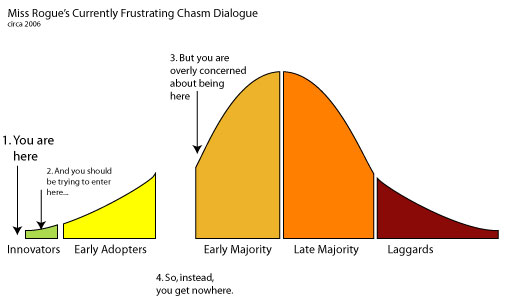Note: This is cross posted from WhoYouCallingAJesse.com by Jesse Rodgers, who is a cofounder of TribeHR. He has been a key member of the Waterloo startup community hosting StartupCampWaterloo and other events to bring together and engage local entrepreneurs. Follow him on Twitter @jrodgers or WhoYouCallingAJesse.com.
![]()
![]()
![]() Some rights reserved by wallyg
Some rights reserved by wallyg
The popular belief in Canada is that the tech startup world has been fairly light on investment dollars relative to other industries in Canada. Because there is such a disparity in seed or angel round investment size in Canada vs the US people tend to point to that as a reason people go south. The perceived result of the funding problem (and likely the weather) is that there are 350 000 Canadians in the Valley. No one can argue the talent to build global calibre tech companies exists in Canada (or at least has Canadian passports) but you can certainly argue Canada lacks that certain something to keep them here.
Five years ago Paul Graham observed that the total cost to get a tech startup started had dropped dramatically and will continue to do so.
So my first prediction about the future of web startups is pretty straightforward: there will be a lot of them. When starting a startup was expensive, you had to get the permission of investors to do it. Now the only threshold is courage. – Paul Graham, 2007
There is a lot of attention around getting young people money but does that help them? Does that keep them in Canada? I would argue that the ones that do need and can use capital don’t pull up stakes and leave town for the investment. They leave town (or the country) because they are missing something more valuable than money — customers, mentorship that helps them get customers, and a network of peers.
Know thy stage
The problem with comparing funding deal levels in Canada and the US is that it ignores the stage the company is in relative to the stage of US startups raising money for the first time. The Startup Genome report 01 and the Startup Genome Compass offers startups an excellent way to measure themselves against a benchmark of over 3 000 startups. In the report there is a table (shown below) that gives you some overall averages for all startups.

From the Startup Genome Report 01.
In last seven years of being involved in the Canadian startup community (mostly in Waterloo) and in the last three years leading what is arguably the best student focused incubator in Canada while founding my own startup. I saw dozens of companies peek into the Discovery phase, a few move on through to the Validation phase.
What I have seen happen before the discovery phase:
- Talk of raising money is used to pull in a large group of talent.
- Focus is not on customers, it is on technology or raising money.
- There is little help by way of mentorship that takes the time to understand the dynamic of the group.
- Mentors focus on finding a way to get them money so they can work full time.
What founders fail to do:
- Define the problem.
- Find out what people are looking for.
- What else do they need in a system?
- Determine what they might pay for it by getting them to pay for it and talking to our customers.
- Measure, iterate, repeat.
Startups need to focus more on customer acquisition and growth in Canada, enough talk about raising money
There are so many business plan and pitch competitions one could make a career out of attending them. This gives a false sense of success because the ‘winner’ is determined on a lot of factors except their ability to actually get customers. The game becomes about (and has been it feels like) how to put together a report on an idea (business plan) and present in a way that makes you look confident.
The game is really about getting lots of people to give you their money because you provide value to them. What makes you better than others is that you are chasing a much bigger problem that will provide value to a full percentage of the world’s population. Bonus points if you change the world.
Note: This is cross posted from WhoYouCallingAJesse.com by Jesse Rodgers, who is a cofounder of TribeHR. He has been a key member of the Waterloo startup community hosting StartupCampWaterloo and other events to bring together and engage local entrepreneurs. Follow him on Twitter @jrodgers or WhoYouCallingAJesse.com.




